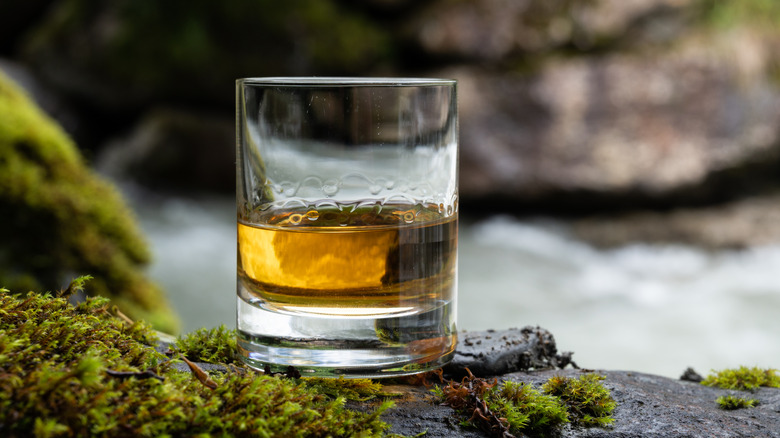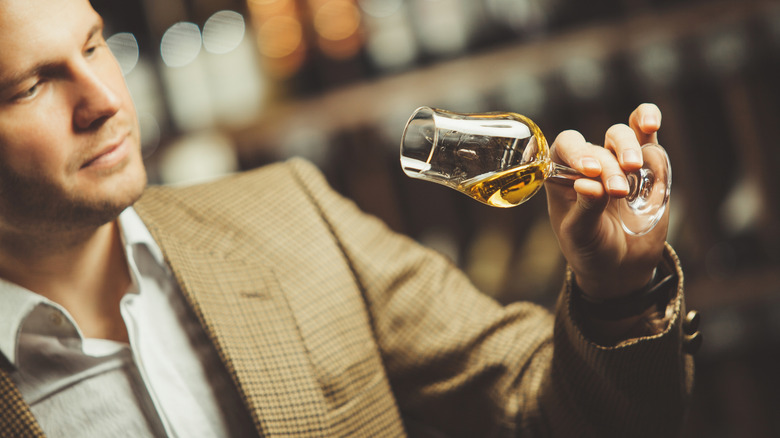What Peat Does For Your Whisky
There are lots of ways to order a whisky, and seemingly even more ways to make one. The difference between whiskey and bourbon, for example, mostly comes down to where it was made (although bourbon has a few other requirements); and, of course, most of the world's whisky comes from Scotland. But one particular style that's always stood out in how distinctly different it tastes — to me, at least — is peated whisky, which is known for tasting especially smoky. I was loosely aware that peated whiskey is made using peat, a spongy, organic substance made of decomposed plant matter; the whisky itself comes from other materials like grain. But I knew nothing else beyond that, or how on earth you'd pull those flavors from it.
To get a better idea, we spoke to Caitlin Bartlemay, master distiller at Hood River Distillers in Oregon. Bartlemay describes the nuance in flavors of these whiskies, saying, "Peat is an amazing piece of whisky tradition. It is the defining flavor and aroma for swaths of whisky lovers around the world. Including peated malt, even as a portion of the mash bill, can add a great deal of depth and character to the final aged spirit. It's contribution runs from a briny and iodine saltiness, through robust earthy notes, and all the shades of smoke." It's considered a major aspect of many Scotches, and if you're a whisky drinker, you've likely tasted it.
Smoking up a peated whisky
Even though the peat blocks used for distilling are essentially thick clumps of dirt, it's the smoke from burning peat which directly interacts with the whisky. If you're a booze history buff, early distillers first started making peated whiskies because peat as fuel was convenient. Caitlin Bartlemay explains that the traditional malting process involves briefly wetting grains to make them grow, and then drying out the seeds to preserve their sugars and enzymes. Using smoke from peat fires was the easy way to do this, which is how peated whisky gets its distinctive smokiness. "Over the drying process the flavors and aroma from the peat and peat smoke are imparted in the grain, and follow the product through until it ends up in your glass," says Bartlemay.
Why do different types of peated whisky taste so different, then? It's because there are different types of peat. A seasoned whisky drinker with a sensitive palate may be able to tell where a peated whisky comes from just by taste alone. According to Bartlemay, "Peat is an amazing way to tap into the provenance of a region. Depending on where the peat comes from, and also how the final malt is used, it will change the way those flavors and aromas express themselves in the final product." No matter where it comes from, a good smoky, peated whiskey is a great choice for the "Smoky Cokey" cocktail, which pairs Lagavulin 16 Scotch with a can of Coke.

